Unrealized excellence
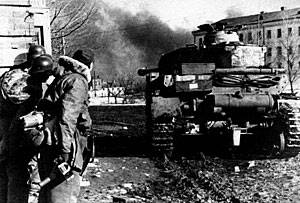 Once again about tanks and tank troops of the Red Army and the Wehrmacht
Once again about tanks and tank troops of the Red Army and the WehrmachtIn the "statistical study" under the intriguing title "Grif secrecy lifted" under the general editorship of Colonel-General GF Krivosheev, quantitative data of military equipment in the armed forces of the USSR and Germany and their ratio are given. With respect to Soviet tanks of all types, the numbers are indicated: active army - 14,2 thousand in military districts and reserve of the Supreme Command - 8,4 thousand. It is specified that of this amount in 14,2 thousand, the existing army needed an average repair of 44% and major repairs - 29% of tanks, so the fully operational tanks in the army were 3,8 thousand units. As for Germany, the number of 4,3 thousand is indicated on the Soviet-German front, and therefore the ratio of tanks in the current 1: 1,1 armies in favor of Germany. At the same time, in the “scientific research” of Krivosheev there are no references to documents or methods for obtaining these absurd data.
In 1994, the team of the Institute of stories As a result of many years of work, the Ministry of Defense of the Russian Federation published the work: “Combat and strength of the Armed Forces of the USSR during the Great Patriotic War: Statistical compendium No. 1 (June 22, 1941 of the Year)” 1994 Voenizdat. This collection presents the results of an analysis of monthly reports from the troops, including 1 on June 1941, on the qualitative and quantitative state of weapons and military equipment, on the staffing of troops, on the number of armies, corps and many other information. These data completely refute the far-fetched information presented in the “scientific research” of the authors under the guidance of Krivosheev.
But Statistical Collection No. 1 was published in total in 25 copies! In 2001, it was republished - 100 copies, in essence, with a "for official use" stamp.
Therefore, I present the quantitative and qualitative characteristics of tanks from “Collection No. 1” and information from the combat logs of military units and formations.
TANKS OF GERMANY
“On 1 June 1941 in Germany, the number of all tanks and assault guns taken from factories and transferred to the troops of the army and reserve army, as well as under the control of artillery and technical supply offices, was 5639 units. Of these, TI - 877, 35 (t) -187, T-II - 1072, flamethrower - 85, 38 (t) - 754, T-III - 1440, T-IV - 517 tanks. Commanding - 330. Total tanks - 5362. Assault guns - 377. In the army in the east on 22 June 1941, there were only tanks (without flamethrowing) 3332. ”(B. Muller-Hillebrand. Reference book“ Land Army of Germany. 1933 – 1945 ”).
Their types and quantities are as follows:
- TI (two machine guns 7,92 mm) - about 180;
- T-II (20 mm cannon, machine gun 7,92 mm) - 746;
- 38 (t) (37 mm gun, 2 machine gun 7,92 mm) - 772;
- T-III (37 mm or 50 mm gun, 3 machine gun) - 965;
- T-IV (75 mm short-barreled gun, two machine guns 7,92 mm) - 439
- commanding - 230.
The French captured tanks did not fit into the German structure for managing the battle of tank divisions, so there was not a single French tank in service with tank divisions.
And now we’ll clarify the tank forces of the allies of Germany (Finland, Slovakia, Hungary, Romania and Italy), which our publicists emphasize and are taken into account as significant tank forces. The strongest were the Finns and Romanians.
In the Finnish army there were 86 tanks. In this case, the basis of the tank fleet consisted of captured Soviet obsolete T-26 and BT, as well as self-propelled units, created by the Finns on their base. In addition, there were several of our last T-28 medium tanks of the latest model years (they had a long-barreled 76,2 mm gun on them and the booking was enhanced).
Finnish tanker poses at the trophy tank T-28, 1940 year
In service with the Romanian tank brigade in the number of 60 units were the Czech LTvz35 tanks and part of the Renault 1920 type tanks.
Czech tank LTvz35
By the autumn of 1939, before the German attack on Poland, tank divisions of Germany had 6 tank divisions of the model 1939 of the year and 4 light infantry divisions armed with tanks. After the conversion of light infantry divisions into tank divisions on April 1 1940 (before the start of the Western campaign) there were 10 tank divisions. For the first time, tank groups were created, initially one, and at the second stage three: Kleist, Guderian, Goth. This was achieved by the concentration of tank forces, which is important for enhancing the impact force. During the attack on the USSR, four tank groups were created (from December 1941 of the year became known as "armies").
Thus, the German military command not only in words, but in deed, put into practice the theory of deep military operations, which were based on the maneuverable actions of large tank formations. But it seemed to Hitler that it was not enough to have 10 tank divisions, and therefore the formation of eleven new ones began - from 11 to 21. But for the formation of new divisions, tanks were not available, and therefore it was decided that the formation should be carried out mainly by reducing the tank units of the 10 divisions, i.e. reducing the number of such in them. So of all the 10 divisions that had a tank regiment of 2, one regiment was transferred to the newly created division.
As a result, while in a campaign in the West, the core of a tank division was a tank brigade of two tank regiments, now the basis of a tank division was one tank regiment of two or three battalions.
22 June 1941, 17 armored divisions were concentrated on the border with the USSR.
TANK OF THE USSR
On 1 June 1941, there were more than 25 000 tanks in the Red Army. A valid 18 844 unit. In June, 1941 was also produced 305 tanks.
Types of tanks and their number, in brackets - serviceable:
- T-35 (76 mm gun, 2 guns 45 mm, 5 machine guns 7,62 mm) - 59 pcs. (42 pcs.)
- KV -1 (76 mm gun, 4 machine gun 7,62 mm) - 412 pcs. (410 pcs.)
- HF-2 (152 mm howitzer, 4 machine gun 7,62 mm) - 135 pcs. (134 pcs.)
- T-28 (76 mm gun, 4 machine gun 7,62 mm) - 442 pcs. (292 pcs.)
- T-34 (76 mm gun, 2 machine gun 7,62 mm) - 1030 pcs. (1029 pcs.)
- BT-7М (45 mm gun, 1 machine gun 7,62 mm) - 704 pcs. (688 pcs.)
- BT-7 (45 mm gun, 1 machine gun 7,62 mm) - 4563 pcs. (3791 pcs.)
- BT-5 (45 mm gun, 1 machine gun 7,62 mm) - 1688 pcs. (1261 pcs.)
- BT-2 (37mm gun, 1 machine gun 7,62 mm) - 594 pcs. (492 pcs.)
- T-26 (45 mm gun, 2 machine gun 7,62 mm) - 9998 pcs. (8423 pcs.)
- T-40 (2 mm machine gun 12,7 mm and 7,62 mm) - 160 pcs. (159 pcs.)
- T-38 (1 machine gun 7,62 mm) - 1129 pcs. (733 pcs.)
- T-37 (1 machine gun 7,62 mm) - 2331 pcs. (1483 pcs.)
- T-27 (1 machine gun 7,62 mm) - 2376 pcs. (1060 pcs.)
- Su-5 (1 gun 76 mm) - 28 pcs. (16 pcs.)
Total: 25 621 tank, which is registered, of which 19 997 are serviceable (combat-ready) over 78%.
But there are still no several thousand armored vehicles armed with 45 mm mm guns.
SU-5-1 76mm
In June 1939 of the year, a specially created commission chaired by Deputy People's Commissar for Defense Ye.A. Kulik began a review of the organizational structure of the troops, including the armored ones. This decision was approved by the Main Military Council. Instead of 4 shells, it was decided to have 42 tank brigades in wartime.
Thus, the previous many years of work on mastering the experience of leading large mechanized formations, in particular mechanized corps, by the troops, in accordance with the theory of deep combat adopted earlier, was crossed out.
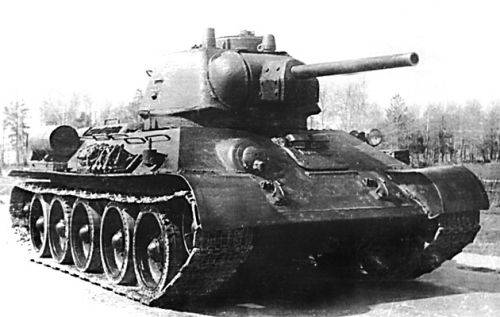
Only six months after the dissolution of the tank corps, as the People's Commissariat of Defense "based on Stalin's instructions," examining the results of the fighting of the German tank and motorized corps in the West, he returned to revising the recent decision on tank (mechanized) corps.
9 June 1940, the People's Commissar of Defense, approved a plan to form new mechanized corps with a special staff. In 1940, the 9 mechanized corps were formed. The new mechanized corps included two tank and one motorized divisions. In the tank division there are two tank, motorized rifle and artillery regiments, tanks - 375 units. The motorized division consisted of a tank, two motorized rifle and artillery regiments, tanks - 275 units. Thus, on the whole, the mechanized corps should have had an 1031 tank. In addition to the 9 mechanized corps, 2 separate tank divisions were formed.
But the nine commandos of the Red Army seemed not enough. Instead of fully equipping the existing 1941 in February, the General Staff developed an even broader plan for the formation of new armored and mechanized troops, providing for the creation of another 21 corps (later the formation of one mechanized corps was canceled). And since April 1941, their formation began.
To complete the 29 mechanized corps and the 2 separate divisions, it was necessary to create an 61 tank division (for the 2 division per building). The division relied: personnel - 11 343 man, tanks 375. In the mechanized division of the mechanized corps there was a 2 motorized rifle regiment, a tank regiment (275 tanks) and a gun-artillery regiment, as well as a separate anti-tank division (30 guns 45 mm caliber). In addition, there were tanks in the cavalry divisions (regiment), and separate tank battalions in the airborne troops.
It was not possible to fully equip all 29 mechanized corps by June 1941 to the regular number. About this, as the brightest evidence of our "unpreparedness for war", was heard loudly by historians from the agitprop department, hiding the true scale of the armored forces of the Red Army. Therefore, in the current conditions, all the mechanized corps were divided into 19 “combat”, 7 “reduced” and 3 “reduced second order”. By the end of 1941, it was planned to have as a part of the mechanized corps and 2 separate tank divisions of the 18 804 tank, including 16 655 tanks in the “combat mechanized corps”. The average number of tanks (877) of the mechanized corps was equal to or exceeded the average number of tanks (817) of the German tank group.
Already by February 22, the 1941 of the mechanized corps included the 14 684 tank. The increase in the number of 4120 units planned before the end of the year was significantly less than the actual production of 1941 tanks in the 6590 year (including 1358 - KV; 3014 - T-34; 277 - T-40 and other types (T-50, T- 60). For comparison, we note that Germany (for which “all of Europe worked”) in 1941 produced only 3256 tanks (including 243 - T-II; 1713 - T-III; 480 - T – IV; 698 - 38 (t) and 132 Commander (Muller-Hillebrand Handbook).
COMPARE CHARACTERISTICS
Having reliable baseline data on the number and types of tanks, we will conduct a comparative analysis of the opposing tank groups of the Red Army and the Wehrmacht in June 1941. Based on their functional purpose and combat characteristics, let's conditionally divide all tanks into 4 categories: tankettes, light tanks, artillery tanks, medium tanks.
Let us begin the analysis of tanks from the opposing German 1 tank group of Colonel-General von Kleist of the Army Group “YUG” and the Soviet mechanized corps of the Kiev Special Military District (South-Eastern Front) and OdVO (Southern Front). The “tankettes” of the 1 tank group of the total number of tanks 799 units include 8 tanks TI; 217 T-II and all 65 commanders. With these tanks of the Wehrmacht, and more specifically - with the German “cannon” T-II tanks, we will compare our outdated, shot to the start of the war from the production of the T-26.
Padded German tanks Pz.III and Pz.II
Although the thickness of the armor of the T-II tank in 2 times more than that of the T-26 tank, it didn’t turn into a tank with a counter-armor. The Soviet T-26 type 20K 45 mm caliber cannon confidently penetrated such armor at a range of 1200 m, while the 20 mm projectile KwK-30 gun retained the necessary penetration only at a range of 300-500 m. This combination of armor and weapon parameters allowed the Soviet with proper use of the tank, it was practically impunity to shoot German tanks, which was confirmed in battles in Spain. The T-II tank was also unsuitable for the execution of the main task - the destruction of fire weapons and manpower of the enemy, since the 20 mm cannon shell was not at all effective for this task. To hit a target, a direct hit was required, like from a rifle bullet. At the same time, a “normal” high-explosive fragmentation projectile weighing 1,4 kg was developed under our gun. Such a projectile struck targets such as a machine-gun nest, a mortar battery, a log dug, etc.
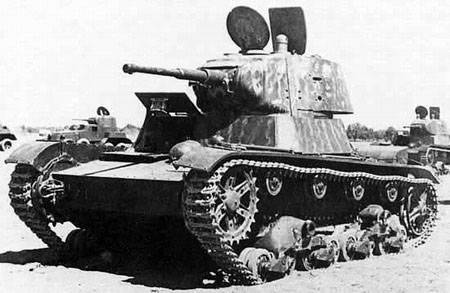
Now about the quantity. Against the 280 "tanket" 1-th tank group of the Wehrmacht in the ten mechanized corps of the South-Western and Southern fronts were combat-ready 1501 tank T-26 of 1873 listed as registered. The ratio of the number of tanks in this category is 1: 5,3 in favor of the Soviet tanks. In addition, 1 in June 1941 of the year in the Kiev OVO and Odessa VO included more than 421 units of T-37 and T-38 amphibious tanks with machine-gun armament, as well as 111 new T-40 amphibious tanks armed with a large caliber machine gun and an 12,7 gauge. 7,62 mm caliber.
Next, we consider the comparative combat characteristics of the second category - "light tanks". These include all the tanks of the Wehrmacht, armed with 37 gun mm caliber and machine guns. These are German T-III tanks of the D, E, F series and Czech tanks 35 (t) and 38 (t). In the 1 th tank group armed with five tank divisions of Czech production tanks were not, and the T-III tanks of the above series were 162. From the Soviet side, we will accept for comparison analysis light tanks BT-7 and BT-7 M.
In terms of the “armor, mobility and armament” parameters, our “light tanks” BT-7, at least in two, are not inferior to the German “troika”, and the Czech tanks are significantly superior in all respects. Frontal armor with X-NUMX mm thickness for the T-III tanks of the specified series, as well as T-II tanks, did not provide counter missile protection. Our tank with a 30 mm gun could hit a German tank at a kilometer range, while remaining in relative safety. As for mobility and power reserve, the BT-45 (7) tanks were the best in the world. The fragmentation projectile (7 g) of a Škoda 610 tank gun of mm caliber was 37 times smaller than that of the Soviet 2K cannon, which resulted in a considerably smaller striking effect on infantry. As for the action on bronzesel, 20mm caliber guns were ineffective (in the German army they were called "army door beaters").
Light tank BT-7
The “light category” combat-ready tanks in the Kiev ABO mechanized corps on 1 June 1941 were 994 BT-7 and 192 BT-7М, and in Odessa IN - 150 BT-7 and 167 BT-7М. The total number of serviceable "light tanks" of the BT series of two districts was equal to 1503 (from 1970 - registered), which was the numerical ratio of 1: 9,1 in favor of the Soviet troops.
So, in the category of "light tanks", the Soviet troops in the Southern theater of operations had a huge quantitative advantage with some qualitative superiority.
Next, we consider the category of "artillery tanks", which were designed to maximize the approach to the enemy of a powerful fire impact on manpower and combat means.
Artillery support tanks for infantry were not originally intended to fight their own targets. A distinctive feature of tanks in this category were short-barreled guns (the T-IV tank had a barrel in caliber L equal to 24), the initial projectile speed of which and, therefore, the penetration rate of these guns was very low (45 mm Soviet gun 20K exceeded the German gun 75 mm T-IV tank at all distances). To fight the infantry, our T-28 tank (thanks to the presence of two separate machine-gun turrets) was better armed. In addition, some of the T-28 tanks of the last years of release were armed with longer guns and shielded with additional armor plates 20 – 30 mm thick. A similar modernization in terms of armor reinforcement took place with German tanks (T-IV tanks of the first series A, B, C, etc. had forehead armor - 30 mm, board - 20 mm). As for the short-barreled gun, its replacement with the long-barreled (L 43) occurred only in April 1942. The wide tracks of the Soviet T-28 tank provided him with better maneuverability. In general, on the whole set of tactical and technical characteristics of these tanks were equivalent.
As part of the Wehrmacht’s 1 Tank Group, T-IV support tanks had exactly 100 units: 20 tanks in the division. As of 1 June 1941, the mechanized corps of the Kiev OZOZ were armed with X-NUMX tank T-171 (from 28 registered) and 191 operational five-tower giant T-42, armed with one 35 mm cannon, two 76 cannon caliber, two 45 guns, two 10 guns, one 28 caliber, two two-guns 213 caliber armed with two XNUMX caliber guns, two XNUMX caliber guns, two XNUMX guns, two caliber guns, two XNUMX guns equipped with two XNUMX caliber guns and two XNUMX caliber guns equipped with two XNUMX caliber guns and two XNUMX caliber guns equipped with two XNUMX caliber guns and two XNUMX guns. In the Odessa military district there were about XNUMX T-XNUMX tanks. In total, there were more than XNUMX serviceable "artillery tanks" in the South theater, that is, twice as many German ones.
THE BEST
Finally, let us consider the best that was used by the Wehrmacht’s tank divisions and the Red Army’s tank divisions on 22 June 1941 of the year conventionally included in the category of “medium tanks”.
“The best” was determined not by the author of this article, but by the state commission (out of fifty engineers, designers and scouts), who, under the leadership of the people's commissar Tevosyan, three times in 1939 – 1941 studied the state of the German tank production in detail and only one tank brand T-III. The best tank T-III of the H and J series was due to two circumstances: the new 50 mm KwK-38 cannon and the front armor of the hull 50 mm thick. All other types of tanks of our specialists are not interested. By the way, under the cover of the friendship agreement, the following were purchased: “Messerschmitt-109” - 5 pieces; "Messerschmitt-110" - 6 pieces; 2 stuff "Junkers-88"; 2 things Dornier-215; one newest experimental Messerschmitt-209; 105 battery mm anti-aircraft guns; drawings of the newest world's largest battleship "Bismarck"; tank radio stations; dive bombing sights and many other weapons systems and military equipment. And only one German tank of the same type.
German tank Pz.III Ausf.J
This tank at the Soviet training ground was thoroughly studied and tested by shooting at armored vehicles. Therefore, our military-political leadership was well aware of the level of German tanks and the state of the German tank industry as a whole.
In the Red Army, the "best" from the category of "medium tanks" was the T-34 tank.
By all indications - mobility, armor protection, armament T-34 tank surpassed the German T-III H and J tank, the best in June 1941 of the year. Long-barreled 76 mm F-34 gun penetrated any armor of the most protected German tanks at a distance of 1000 – 1200 meters . At the same time, not a single tank of the Wehrmacht could hit the “thirty-four” even with 500 meters. A powerful diesel engine provided not only fast-moving and relative fire safety, but also allowed more than 300 km to pass at one gas station.
T-34 was a heavy blow to the German army
The most comprehensive and qualified assessment of the Soviet T-34 tank was given by German General B. Muller-Gillebrand: “The appearance of the T-34 tank was an unpleasant surprise, because of its speed, high maneuverability, enhanced armor, armament and, mainly, the presence of an elongated 76 mm the guns, which had increased accuracy of shooting and penetration of projectiles at a large, still considered unattainable distance, was a completely new type of tank weapons. The German infantry divisions, although each had a total of 60 – 80 anti-tank guns and had a sufficient number of other anti-tank weapons, but with a caliber of 37 mm guns, they had almost no effect on the T-34. The anti-tank gun 50, introduced by the German forces at that time, was also not an effective enough tool ... "And then he writes:" The appearance of the T-34 tanks radically changed the tactics of the tank forces. If until now certain requirements were made to the tank design and its weapons, in particular, to suppress infantry and infantry support vehicles, now the main task was to demand enemy tanks at maximum range in order to create prerequisites for subsequent success in battle. ” Similar reviews make and other generals of the Wehrmacht.
And now about the quantity: in the 1 tank squadron of “medium tanks” T-III series H and J there were 255 units. The mechanized corps of the South-Western Front had 555 T-34 tanks, and the South one - 50 tanks (a total of 605 T-34 tanks).
But in the Red Army from December 1939, a heavy KV tank was in service. The Soviet 48-ton tank KV-1, having frontal armor in 95 mm (tower - 100 mm), and onboard - 75 mm, was invulnerable to tanks and the best German anti-tank guns. The only means of dealing with it were a few German 88 anti-aircraft guns caliber mm with special equipment. The forced diesel B-2K developed the power of the 600 hp, which provides the speed of 35 km / h. The F-34 76 gun of mm caliber could shoot any German tanks at any distances at any shooting angle in the summer of 1941. KV tanks up to 22 June 1941 were produced in two versions: KV-1 with 76 mm gun and 52-tonne KV-2 with mm 152 howitzer. With the beginning of the war, the production of tanks KV-2 was discontinued.
In the tank divisions of the Wehrmacht heavy tanks were not. No one!
On the 22 June 1941, the South-Western Front mechanized corps had 277 serviceable KV-1 and KV-2 tanks, and the Southern Front had 10 units. Total 280 units. In view of the absence of heavy tanks in the Wehrmacht, we will compare them with the best German T-III tanks of the H and J series, which are really incomparable!
So, against 255 the best German tanks 1-Panzer Group von Kleist in Mechanized corps of Kiev PSB and Odessa IN on 22 June 1941 year was 605 tanks T-34 and 280 heavy tank KV-1 and KV-2, just 885 tanks that exceeded the total number (799) of German tanks of all types of the 1 tank group, including obsolete TI tanks with machine guns, TII with 22 mm gun, T-III with 37 mm gun and "commander".
So, for the month of June 1941 of the year, against the 799 tanks of the 1 tank group of the Wehrmacht, which were armed with five tank divisions (there were no tanks in the German motorized divisions) were opposed by twenty Soviet tank and eleven motorized divisions equipped with 5997 armored tanks.
So where is this notorious quantitative and qualitative superiority of German tanks over the Soviet ones, about which even venerable doctors and academicians - “experts” of the initial period of war lie for more than sixty years? What “5 – 6-multiple superiority in breakthrough places” recalled G. Zhukov in his memoirs?
By the beginning of the second day of the war, with almost no shots fired, the shock force consisted of Soviet mechanized corps (15 of the MK of Brody, 4 of the MK of Lviv, 8 of the MK of Drohobych), which includes more than two and a half thousand tanks, including 720 tanks T-34 and KV, were in the rear of the German advanced units. The attack on the flank and rear of the German forces that had broken through, including the attack on Lublin in accordance with Directive No. 3, could radically change the situation on the entire South-Western Front. But this, unfortunately, did not happen ...
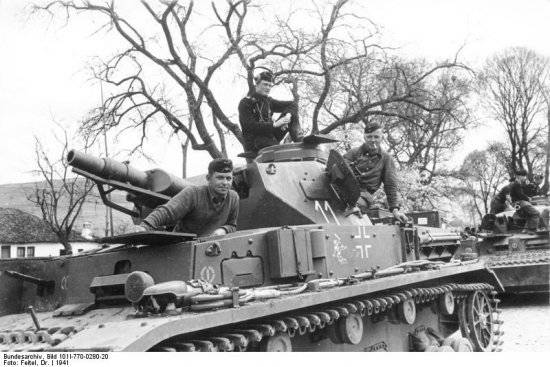
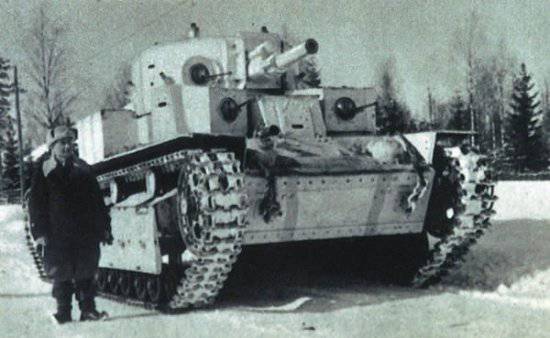
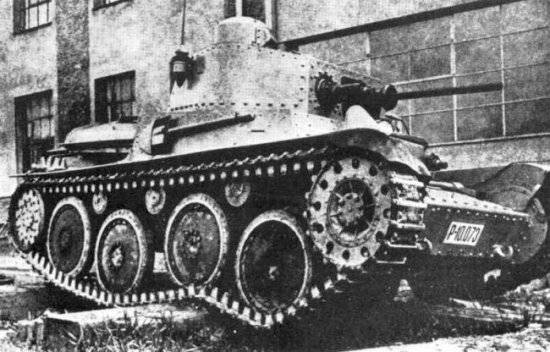
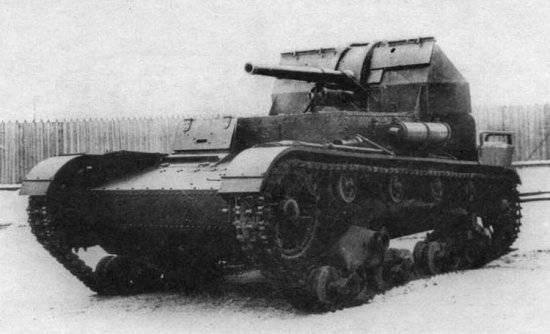
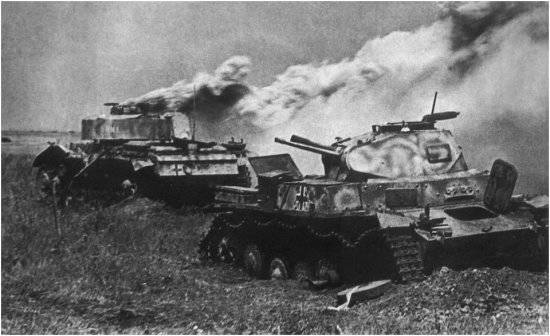
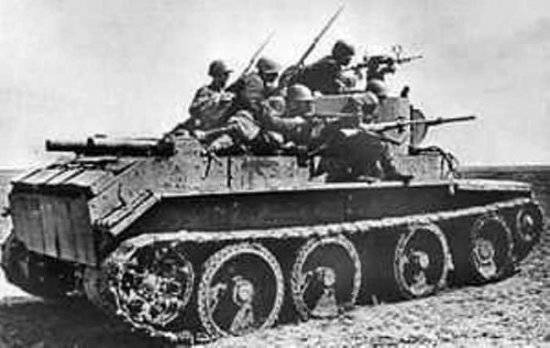
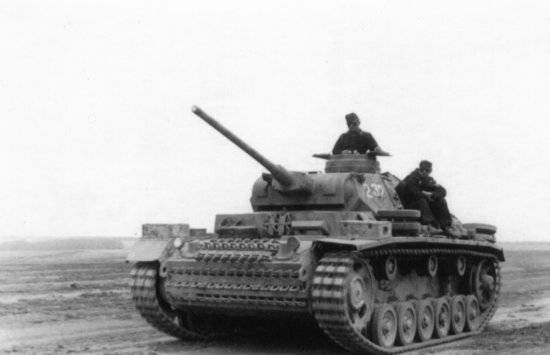
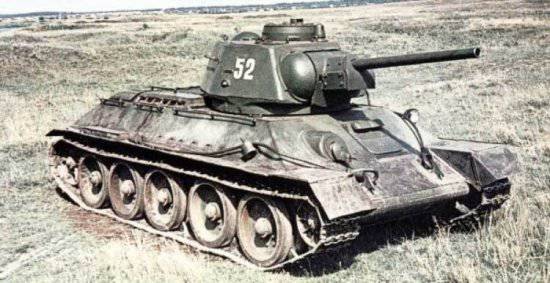
Information